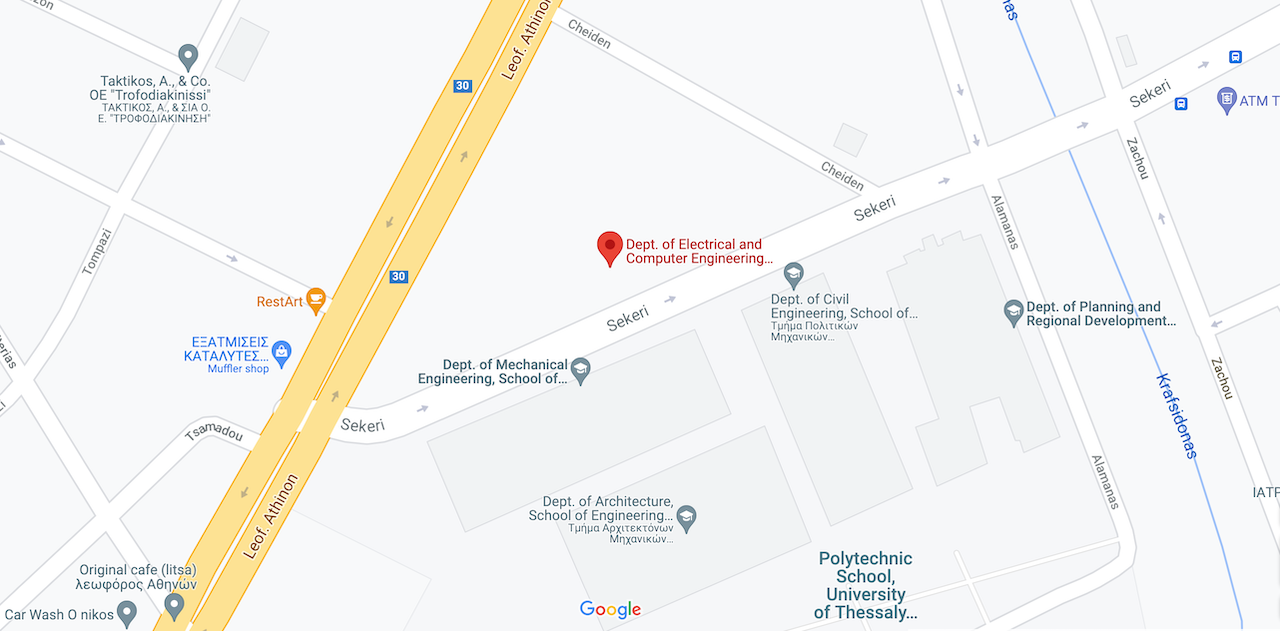| Subject Area | Signals, Communications, and Networking |
|---|---|
| Semester | Semester 6 – Spring |
| Type | Required |
| Teaching Hours | 4 |
| ECTS | 6 |
| Prerequisites |
|
| Recommended Courses |
|
| Course Site | https://eclass.uth.gr/courses/E-CE_U_325/ |
| Course Director |
|
| Course Instructor |
|
- Communication systems model
- Reminder of signals and systems
- Analog modulations (amplitude and frequency)
- Reminder of probabilities and random variables
- Sampling theorem. Quantization. Pulse code modulation and TDMA. PAM and PPM. Line coding
- Baseband digital signal transmission (matched filtering and detection in AWGN, ISI, pulse shaping)
- Digital passband transmission and ISI
- Digital modulations: PSK, ASK, FSK, quadrature modulator
- Channel coding. Source coding
This course is an introduction to telecommunication systems. The material that is covered in this course aims at introducing the student to the basic ideas of telecommunication systems. Special emphasis is given to digital communications. More specifically in the first part of this course the student is introduced to the basic concepts of analog modulation (amplitude and angle modulation). The main objective of the first part of the course is to understand the basic concepts of a communication system. In the next part particular emphasis is given to the transition from analog to digital communications through the sampling theorem and PCM modulation. One of the main objectives of the second part of the course is the understanding of digital baseband modulation and passband signals. The understanding of digital modulation and transmission is essential for all the subsequent courses that the student will follow in the area of communication systems.
After the successful completion of the course the student will be able to:
- Know the basic subsystems of a communication system
- Understand the advantages and disadvantages of the design choices of a communication system
- Understand the different types of problems that communication systems face and propose solutions for each one of them
- Understand the basic tools for checking the performance of a communication system
- Simulate the basic operation of simple communication systems
The verification of the previous learning outcomes will be realized through the homework, the final exam, and simulation projects. More specifically in the final exam the student will be requested to combine different communication subsystems. Also the homework requests from the students to calculate specific quantities and their evaluation. Finally through the Matlab homework the student will be asked to verify the theoretical results that he learned in class.







